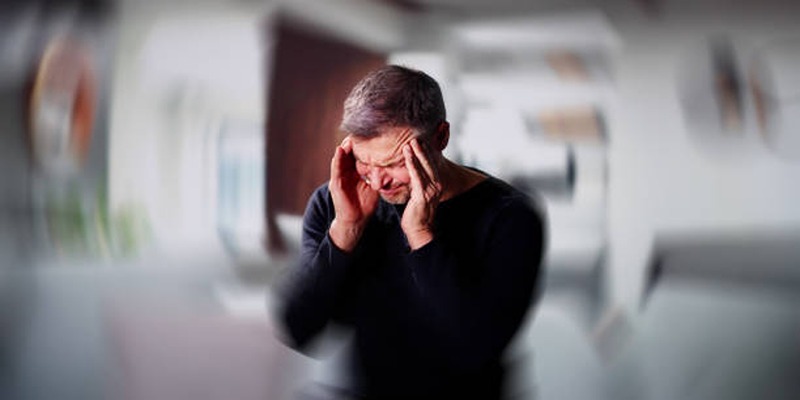Early warning signs of stroke should be identified and acted upon promptly so that more people can be saved from this condition besides minimizing complications. A stroke occurs when blood flow to any part of the brain is stopped, by a blood clot or bleeding. When this happens, the brain cells react violently because they do not receive oxygen as required and hence die. Symptoms of stroke are therefore heralded by sudden weakness or numbness particularly on the face or an arm, confusion, trouble in speaking or understanding speech, loss of vision in one or both eyes, dizziness and most importantly a severe headache. Knowledge of these signs can assist an individual to react fast, which is so important during these disasters.
What Are Strokes?

A stroke is a medical emergency that happens when blood flow to a section of the brain is obstructed or halted. This can result from a blood clot in a vessel (ischemic stroke) or bleeding in the brain (hemorrhagic stroke). Without sufficient blood supply, brain cells can start to die within minutes, leading to lasting damage. Strokes can impact people of any age and background, but certain risk factorslike high blood pressure, diabetes, smoking, and being over 55greatly increase the chances of having one.
Causes of Strokes
The leading cause of a stroke is atherosclerosis, characterized by the accumulation of plaque in the arteries. This buildup can narrow or obstruct the blood vessels responsible for delivering oxygen-rich blood to the brain, ultimately resulting in a stroke. Additional risk factors include high cholesterol, obesity, and insufficient physical activity. In certain instances, strokes may also arise from medical conditions such as atrial fibrillation (irregular heartbeat) and carotid artery disease.
Types of Strokes
There are three main types of strokes:
- Ischemic Stroke: This type accounts for about 87% of all strokes and happens when a clot blocks an artery in the brain.
- Hemorrhagic Stroke: This type accounts for about 13% of strokes and occurs when a weakened blood vessel ruptures, causing bleeding in or around the brain.
- Transient Ischemic Attack (TIA): Also known as "mini-strokes," TIAs are temporary blockages that can last for a few minutes. They are warning signs of a possible future stroke and should not be ignored.
It's important to note that some people may experience a combination of both ischemic and hemorrhagic strokes, known as mixed or cryptogenic strokes.
Signs and Symptoms
The signs and symptoms of stroke typically come on suddenly and may vary depending on the location of the affected area in the brain. The most common signs include:
- Sudden numbness or weakness, particularly on one side of the body
- Confusion and difficulty speaking or understanding speech
- Trouble with vision, such as blurred or double vision
- Dizziness and loss of balance or coordination
- Severe headache with no known cause
Other less common symptoms may include sudden behavioral changes, trouble swallowing, and loss of sensation or control over certain bodily functions.
Act FAST for Stroke Awareness
Knowing the signs of a stroke is only half the battle. Acting quickly is crucial for receiving timely treatment that can prevent permanent damage. To help spread awareness about strokes and how to respond appropriately, many organizations have come up with the acronym "FAST":
- Face drooping: Ask the person to smile and check if one side of their face is drooping.
- Arm weakness: Ask the person to raise both arms and see if one arm drifts downward.
- Speech difficulty: Ask the person to repeat a simple sentence and check for slurred or garbled speech.
- Time to call for help: If you observe any of these signs, call emergency services immediately. Time is critical when it comes to treating strokes, and every minute counts.
Emergency Response
When you call for emergency services, be sure to mention that you suspect a stroke. This will help the responders prepare and take appropriate action on arrival. If possible, also note down the time when the symptoms first appeared as it can be helpful for determining treatment options later on.
It's important to remember that not all strokes present with the same signs and symptoms, especially in women who may experience more atypical symptoms like sudden hiccups or nausea. If you are unsure but still suspect a stroke, it's always better to err on the side of caution and seek medical attention immediately.
Preventing Strokes

While some factors like age and family history cannot be controlled, there are steps you can take to lower your risk of having a stroke:
- Manage high blood pressure: High blood pressure is the leading cause of strokes. Make sure to regularly monitor your blood pressure and take any prescribed medication as directed.
- Control cholesterol levels: High levels of "bad" cholesterol can contribute to plaque buildup in arteries, increasing the risk of a stroke. Eat a healthy diet and exercise regularly to maintain healthy cholesterol levels.
- Quit smoking: Smoking damages blood vessels and increases the chances of developing blood clots. Quitting smoking can significantly reduce your risk of having a stroke.
- Maintain a healthy weight: Obesity and overweight increase the risk of various health conditions that are linked to strokes. Follow a nutritious diet and engage in regular physical activity to maintain a healthy weight.
- Manage chronic conditions: If you have diabetes, heart disease, or other chronic conditions, make sure to follow your doctor's recommendations for managing them.
Conclusion
Strokes represent a critical medical emergency that can lead to life-changing consequences if not addressed swiftly. Recognizing the signs and symptoms of a stroke and acting promptly by calling for emergency assistance can significantly reduce damage and enhance recovery prospects. Additionally, adopting preventative measures can help lower your risk of having a stroke and promote a healthier lifestyle. Remember, in the case of strokes, every second is vital, so dont hesitate to seek immediate medical attention if you suspect one. Stay vigilant and spread awareness about strokes; you could save a life.







